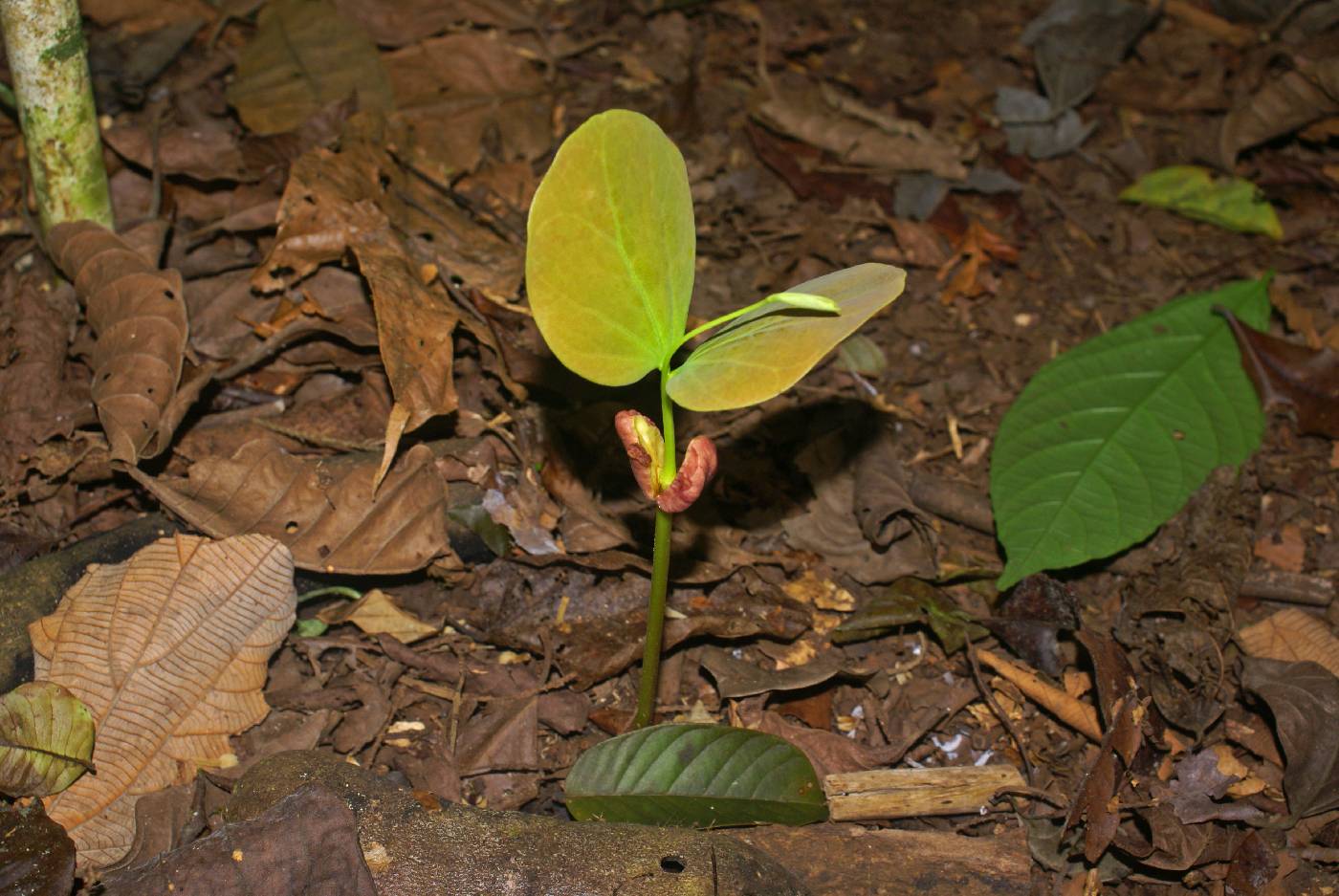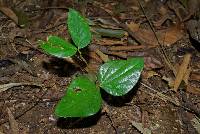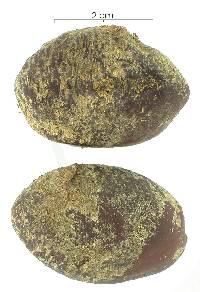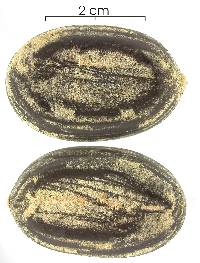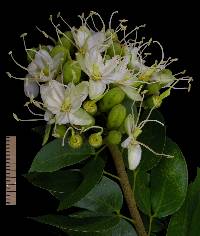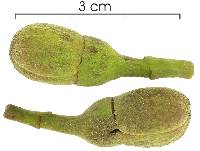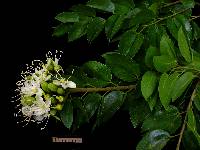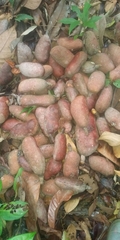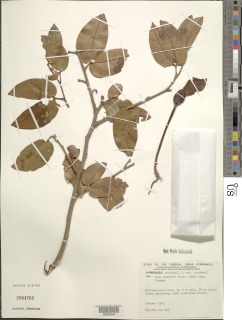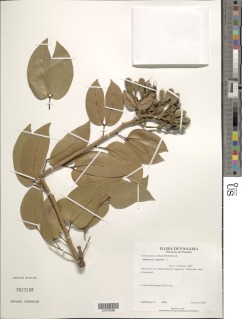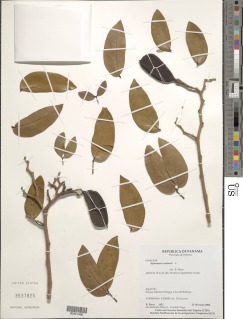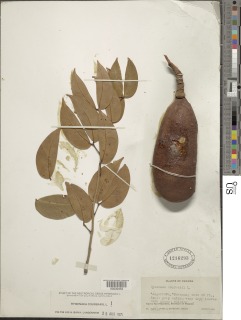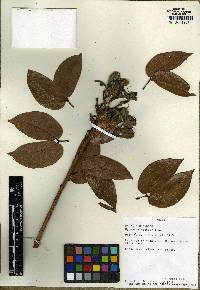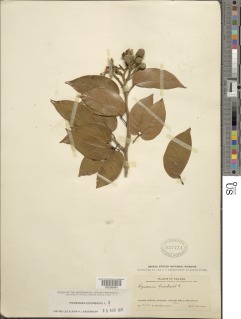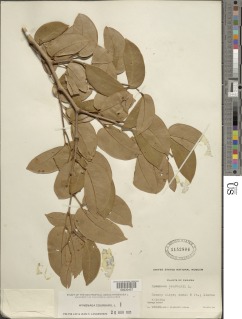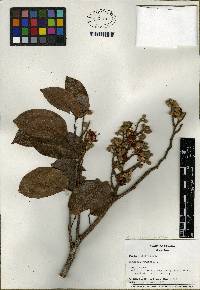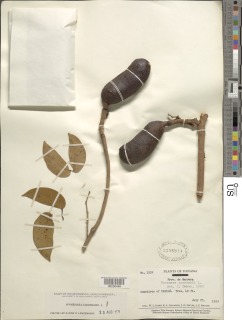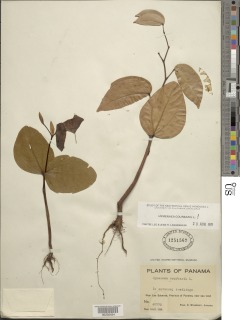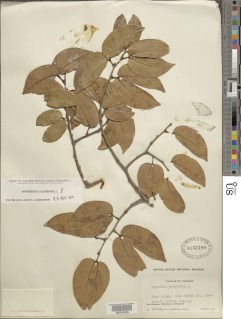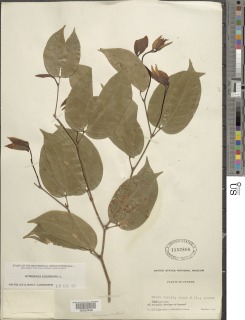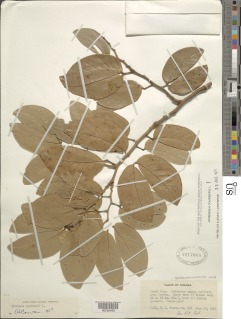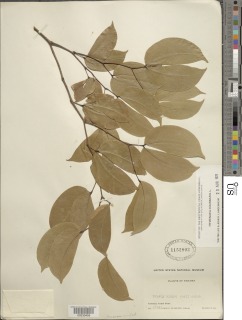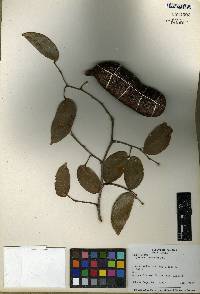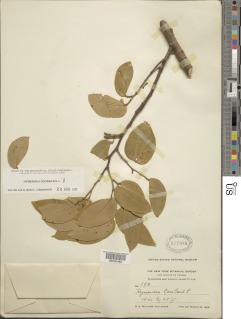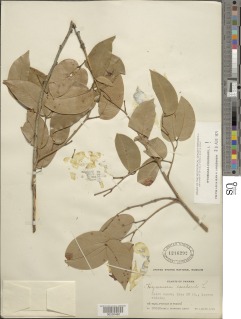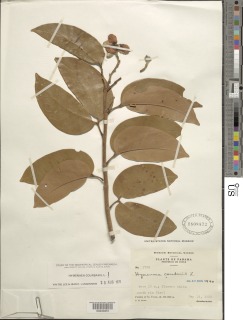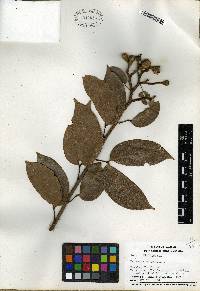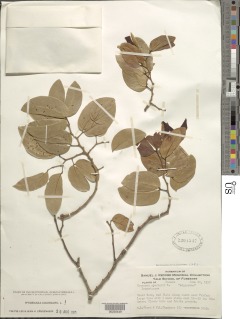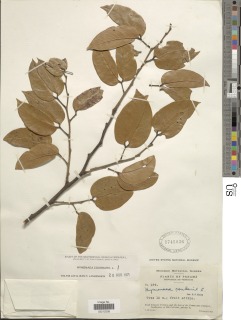

|
|
|
|
Family: Fabaceae
Stinkingtoe, more... (es: algarrobo, guapinol)
|
Description: A tall tree with a staight, unbuttressed trunk, usually cylindrically but sometimes slightly fluted or irregular. In the forest, it can be magnificent, large tree, but in farmland Hymenea is no more than 15 m tall. Leaves are alternate, compound, but with just two leaflets. The leaflets are asymmetric, wider on the outside; it looks like one large leaf has been torn down the middle. The petiole is swollen at the base. Stipules are small and drop readily, so usually not present. Reproduction: Hymenaea is partly deciduous, with some trees losing many leaves early in the dry season but promptly growing them back. Flowers are conspicuous and attractive, large, white, with purple lines in the petals, produced in the dry season. Fruits are fairly heavy pods, green then maturing brown or purplish, with 2-6 seeds inside. The seeds are covered in a dry pulp. Fruits take a full year to develop, and mature during the dry season. Distribution: A tree of the drier half of isthmus, most easily found in forests around Panama City, but even there it is rather scarce. Also seen in gallery forests of Pacific Panama, and sometimes in farmland and other open areas. It can be found in Soberania and Barro Colorado, but very rare at both sites. Not seen north of Soberania. Similar Species: The leaves are very distinctive, and usually can be identified even in tall trees. The only other species with similar leaves is Peltogyne purpurea, but it does not occur in Canal area forests. There are a very few Peltogyne planted in towns, for example one in Gamboa; to distinguish larger trees, note that Peltogyne has small buttresses, whereas Hymenaea's trunk is cylindrical right out of the ground. Uses: This is a well-known tree in rural areas, considered useful in many ways. The wood is excellent and attractive. Fruits are edible. Flowers are known by apiculturists as food for their bees. Resins from the bark are also well-known, used as medicine or for making varnish and glue; they have been thoroughly studied chemically. Descripción: Árbol de 10 a 30 m de alto. Copa redondeada y densa. Tronco con la corteza exterior marrón y lenticelada, internamente es rojiza y de consistencia arenosa. Hojas bifolioladas y alternas. Folíolos asimétricos y con puntos translúcidos, de 4-10 x 2-5 cm, oblongos o lanceolados, con ápice acuminado, bordes enteros y base desigual. Estípulas pequeñas y deciduas. Pecíolo de 1.5-2.5 cm de largo y pulvinado en la base. Flores blancas o amarillentas, con líneas longitudinales de color morado sobre los pétalos. Frutos en legumbres oblongas, de 7-12 cm de largo, con cubierta dura y leñosa, verdes, tornándose marrón o rojizos al madurar. Cada fruto tiene de 2-6 semillas rodeadas por una pulpa harinosa. Datos Ecológicos: La especie crece a bajas elevaciones, en bosques secos o húmedos. En Panamá se encuentra en las provincias de Chiriquí, Coclé, Colón, Darién, Herrera, Los Santos, Panamá y Veraguas. Común y fácil de observar en pastizales y áreas secas de la vertiente del Pacífico. Crece asociada a bosques ribereños con suelos arenosos, arcillosos y bien drenados. Deja caer sus hojas parcialmente durante la estación seca, pero las repone a inicios de la estación lluviosa. Florece y fructifica de diciembre a julio. Las flores son visitadas por abejas y murciélagos nectarívoros. Algunas especies de coleópteros perforan la cubierta de los frutos y dañan las semillas. Especies Parecidas: A menudo se confunde con LK pel2pu Peltogyne purpurea LK2 , pero P. purpurea ocurre en bosques lluviosos y los frutos son legumbres más pequeñas y dehiscentes. También se puede confundir con LK cynoba Cynometra bauhiniifolia LK2 , pero en C. bauhiniifolia los folíolos tienen el ápice emarginado y los frutos son globosos y con la superficie exterior tuberculada. Usos: La madera es empleada en la ebanistería, carpintería, entarimados, instalaciones de lujos, escaleras, tornos, trapiches, construcciones pesadas, puentes y traviesas. La resina se utiliza como barniz y pegamento, también en el tratamiento de la bronquitis, asmas y resfriados. Con la corteza se prepara un remedio para combatir enfermedades renales y las inflamaciones de la vejiga y la próstata. La pulpa harinosa y de olor nauseabundo que rodea las semillas es comestible y muy nutritiva. Los árboles de esta especie se emplean como ornamentales por su follaje brillante y hermosas flores de color blanco o amarillento. Los apicultores lo utilizan como una planta melífera, debido a que las abejas colectan el néctar de las flores. Tree, mostly to 20 (30) m tall and 50 (200) cm dbh; outer bark brown, closely lenticellate, bitter tasting, pale orange beneath surface, glabrous; wood reddish-brown, hard. Leaves bifoliolate; petioles 1-2 cm long, rugose when dry; leaflets narrowly oblong to elliptic-lanceolate, asymmetrical, short-acuminate, unequally rounded at base, 4-10 cm long, 2-5 cm wide, coriaceous, punctate, the midrib conspicuous below. Inflorescences terminal, subcorymbose, to ca 8 (12) cm long, the branches puberulent, the parts jointed and articulate; flowers white or purplish, soon falling, probably opening at night; bracts caducous; pedicels thick, ca 7 mm long; calyx tube ca 8 mm long, 4-lobed, the lobes ovate to oblong, expanding to ca 15 mm long, coriaceous, densely tomentose inside, easily caducous; petals 5, white, sometimes tinged with purple, rounded, 1.5-2 cm long, ca 9 mm wide, clawed below, the claw ca 1.5 mm long; stamens 10, alternately short and long, the long ones to 2 cm long; style attached laterally at apex of ovary, directed somewhat to one side of the flower; stigma held above the lower anthers and at some distance from the divergent longer set. Legumes oblong, flattened, to 17 cm long and 6.5 cm wide, turgid, hard, reddish-brown; seeds (2) 4-6, embedded in sticky pulp. Croat 10209. The flowers are believed to be bat pollinated. Mexico to Peru, Paraguay, and Brazil; West Indies. In Panama, ecologically variable; known from tropical moist forest in the Canal Zone, Veraguas, Herrera, Panama, and Darien, from premontane dry forest in Herrera, from tropical dry forest in Coclé, from premontane moist forest in the Canal Zone and Panama, and from premontane wet forest in Chiriqui, Coclé, and Darien. Tosi (1971) listed this species as characteristic of tropical dry, premontane moist, and tropical moist forests in Panama. Reported also from tropical wet forest in Costa Rica (Holdridge et al.,1971). |
|
|
|

